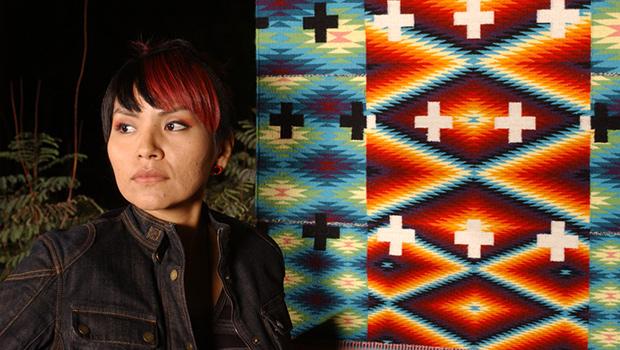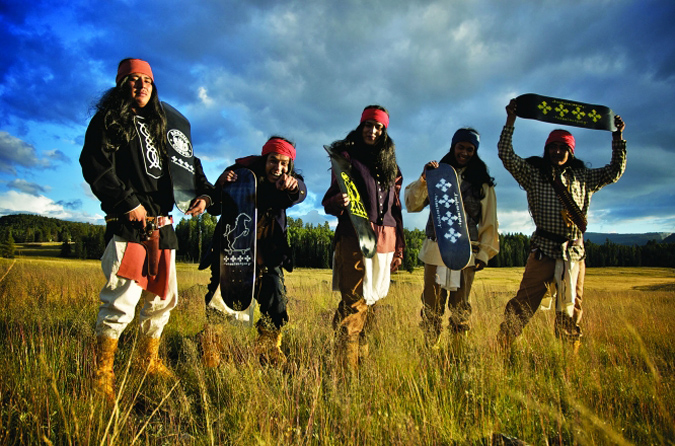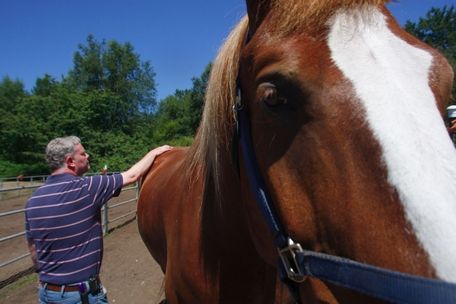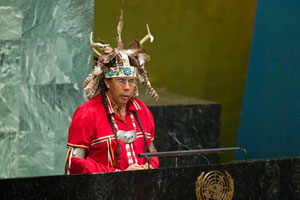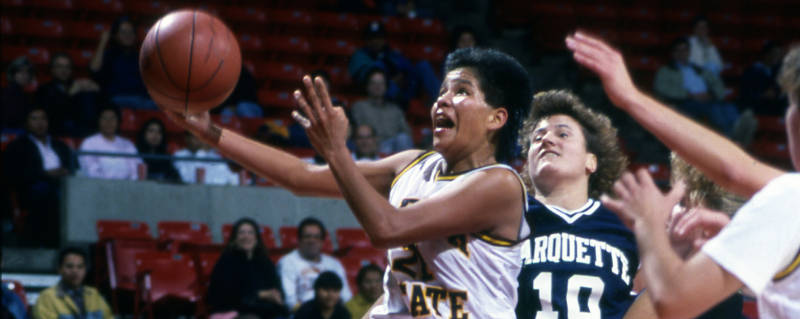
Melissa Cody’s star has been on the rise for a few years now. Of all art techniques and mediums, one would think that something as traditional as weaving, specifically Navajo weaving, would be among the last places to hear things like innovation, avant-garde, rock & roll, hip-hop. She has also expanded her medium from weaver to textile artist. Melissa’s from a family of traditional Navajo weavers, mother Lola Cody also shows with daughter at shows. Her mom taught her the Germantown style at age 5. In 2011, she won a SWAIA DISCOVERY FELLOWSHIP AWARD for emerging artists and many other awards are on the horizon. Before Melissa could take off into the sky as a Firework on the modern art scene, she had to learn the traditional techniques to ground her, to base her in fundamentals, as an homage to family but also to connect generations and have her new works accepted by those who came before her. The materials may be strange but the elders see the tricks, the twists and turns, the stories.
It’s said that Navajo holy person Spider Woman taught Navajo women the art of weaving. Cody has of late embraced the concept—encouraged, perhaps, by her collaborator/boyfriend Dust La Rock—creating a Spider Woman Greets the Dawn textile and posting a Spider Woman comic book to her Instagram feed.
It’s probably important to the art form that young artists like Melissa are into skateboarding, graffiti and street art, and listen to modern music. A piece in progress on Cody’s loom looks like a multicolored electronic component exploding with neon-hued wires—the music coming out would probably be hip hop. Cody loves going to concerts and clubs, she’s tattooed and hangs with a cadre of young artists all over the Southwest. Her resume of shows has gotten hot the last few years, Heard Museum, Eiteljorg Museum, Legends Santa Fe, Indian Market, San Francisco, Los Angeles…
You’ve been in Los Angeles and California recently, and now you’ve relocated, can you tell us what is up with you and your work there?
As of late, I’ve been creating new work for a two-man show that opens October 5th at the Scion AV Gallery on Melrose, in Los Angeles. I’ll be exhibiting along side Dust La Rock, also known as Joshua Prince, who is a co-founder of Fool’s Gold Records out of Brooklyn, New York and is most recognized as the label’s Creative Director. Dust is a phenomenal print artist, graphic designer, and overall artist, so I’m excited to be creating alongside him. For the exhibit, which is titled “Coyote & Spider”, we’ll be working on individual projects, as well as collaborating on a variety of pieces from printed t-shirts, hand-run linoleum block prints, to custom wall tapestries that I will be weaving.
Another undertaking is of course, preparing an inventory for SWAIA Indian Market in August. It’ll be my 22nd year participating in the Market and I can be found at my usual booth space No. 733 LIN-W on Lincoln Street. I’ll predominantly be showing textiles with the “Whirling Log” symbol. My recent work has focused on the “re-introduction” and use of the Navajo Whirling Log symbol, often mistaken for the Nazi “Swastika.” I feel that it’s important to reclaim our traditional tribal imagery and not sway from instilling it into our everyday viewing.
RELATED: “Melissa Cody’s Whirling Logs—Don’t You Dare Call Them Swastikas”
I take it all the Southwest is your artistic territory now?
Well I like to think that my work can stand on its feet anywhere! I was recently Artist in Residence at the DeYoung Museum in San Francisco, so that naturally sparked my interest to come back to California. I currently live in Long Beach with my significant other, Joshua Prince, and it’s been a great environment to venture out into new art circles. Every region within the southwest has its own artistic personality, so I feel very fortunate that I’m able to travel as much as I do, and have my weaving be my sole means of income. My home will always be Arizona, but I also grew up as far west as Southern California, and to the east, Austin, Texas. As mentioned before I’ve been traveling to New Mexico for SWAIA Indian Market every year since I was in grade school, so I’ve always considered it my second home. I eventually lived in Santa Fe long enough to complete my undergrad in Museum Studies at the Institute of American Indian Arts, now called the College of Contemporary Native Arts, and have a brief stint as a Recruiter for the College’s Admissions Dept.
I don’t mean to embarrass you or jinx you, but you must feel the attention, the publicity, the awards, the expectations, how do you deal with it all or where do you put it all, as a young artist?
I think my artwork and medium keeps me in check. Each time I sit down at my loom I commit myself to a piece that I’ll no doubt spend hours, days, weeks, and sometimes months, creating. My weavings take a tremendous amount of patience and attention that it makes it difficult to dwell on the last accomplishment. Each new project is an opportunity to top the last or to venture into unseen territories. I have long term plans for where I want to be in the future as an artist, so each new day is a chance to secure that future. I’m grateful for all the accolades and honors that I’ve achieved up until now, but I don’t want to put boundaries on the reaches of my textile work. As an artist I’m fortunate to be recognized as a “Native artist” working in a traditional realm, but also as a “contemporary” artist who is excelling in my field. It affords me the flexibility to push boundaries within both realms and have a voice that is heard by a wider audience.
Can you name your family influences and any weavers or textile/fabric artisans that may have influenced you?
Family influences begin with my mother, Lola S. Cody. She gave me technical instruction, but also instilled in me a sense of respect for the work that would come off of my loom, the materials and tools I would use to create, and the weavers who came before me. I learned at a very young age that being a weaver was a great responsibility because it meant that I would be part of a group who held sacred knowledge from my ancestors that had been passed down from generation to generation. I’m 30 now, and it’s great to look back and reflect on how my work has changed and evolved from the restrictions of “traditional” regional and trading-post styles. It’s also wonderful to see how my mother’s tapestries have not stayed stagnant either and are continuing to push the limits of what is the new direction of Navajo textiles.
Doris Cody, my paternal grandmother; Martha Gorman Schultz, my maternal grandmother; and Mary Clay, my great-grandmother, have tremendous influence on my weaving as I’m constantly referencing their tapestry work to validate my own. My Grandmother Martha is now in her 80s and still works at her loom on a daily basis. I hope that one day I’ll be able to mirror her strength and vitality to create. I began weaving at the age of 5 so I’m happy that my grandmother has been able to guide my path to the present. She frequently inquires about what projects I’m working on and playfully teases me when my eccentric patterns look a little crazy to her.
Your recent trip to New Orleans for a music festival, have you always sought out the beats, the scene, and the fun, or is it more recent because you can now go where you want? Anything cool you’ve run into by chance or choice?
I was actually invited out by the coordinators of the festival to be a demonstrating vendor at the event, The New Orleans Jazz & Heritage Festival. Music is a constant in every part of my creative process, So to be invited out was a pretty great honor. Especially since I had never been to NOLA or had the opportunity to exhibit my work in the region. As for traveling, I’ve always been on the road. After high school I distinctly remember my dad telling me to travel as much as I could, because he never got to see as much as he had wanted to when he was young growing up in the boarding school system. I think that constant movement is what fuels my work. Up until now, I’ve been fortunate enough that my work continues to be fresh and appealing to an evolving art scene. I’ve been blessed with opportunities to intern with large institutions like the Smithsonian Museums in DC, exhibit at DeYoung Museum in San Francisco, have work in the permanent collection of the Minneapolis Institute of Art, and teach weaving techniques in Southern Africa.
You were involved in a video project with Lynette Haozous and Douglas Miles, are you a working member of any collectives, have you done collaborative projects, and how did this come about?
My upcoming exhibit, “Coyote & Spider,” at the Scion AV Gallery will be my first collaborative exhibition. Up to this point I’ve done small collaborative linoleum print projects, but nothing I would consider a major undertaking. I’m excited to see how the collaborative work will be received by Native and non-native audiences. Currently, my work has the majority of following with in the Native American art community, so showing in a Gallery that doesn’t fall under that umbrella is a new experience I’m looking forward to.
The video project that Lynnette and I were featured in was the Apache Chronicle, produced by Douglas Miles of Apache Skateboards, and Swedish Filmmaker Nanna Dalunde. I was happy to be in the film as it shed light on the body of work that I was creating. At the time I had left Santa Fe, where I had lived for the previous 9 years, and transitioned back to the Navajo Reservation to be with my family after learning my father had been diagnosed with Parkinson’s Disease. These events lead me to weave a body of work inspired by his condition, the symptomatic characteristics of the disease, and also my personal testament of coping with this life-changing experience. Up to this point my textile work was predominantly based in exploring aesthetic values as they pertained to geometric composition & color theory, striving to create textiles that were technically pristine, studying lines of symmetry and 3-dimensional planes. This turning point in my life took me in a direction where weaving was my outlet to create work which was a direct reflection of my personal experience, rather than my stance within the textile medium.
Do you keep track of the work of other contemporary weavers, for instance Ramona Sakiestewa and Gail Tremblay? Or are there other innovative artists, in any mediums, who interest or intrigue you? In the ’70s and ’80s, I worked in parachute netting and construction fence, vinyl and burlap, mesh and wire, also the police tape and biohazard bags like yourself. What drives you or allows you to use different or non-traditional materials?
Oddly enough, I don’t really follow the work of other tapestry artists outside of what my family and relatives are weaving. I think that comes from surrounding myself with friends and family who are painters, sculptors, photographers, tattoo artists, muralists, mixed media artists, and jewelers. I like to look at their work and think of how I can incorporate or translate their style of work or three-dimensional forms into tapestry format. Navajo weaving is a very structured art so I like the challenge of mapping out designs so they come across as fresh and innovative, but also characteristically recognizable as “Navajo.” Social media outlets like Instagram and Facebook have made it a lot easier to connect with creative minds and outlets, so my main artistic influences these days has come from the tattoo artist community.
Alex Jacobs, Mohawk, is a visual artist and poet living in Santa Fe


